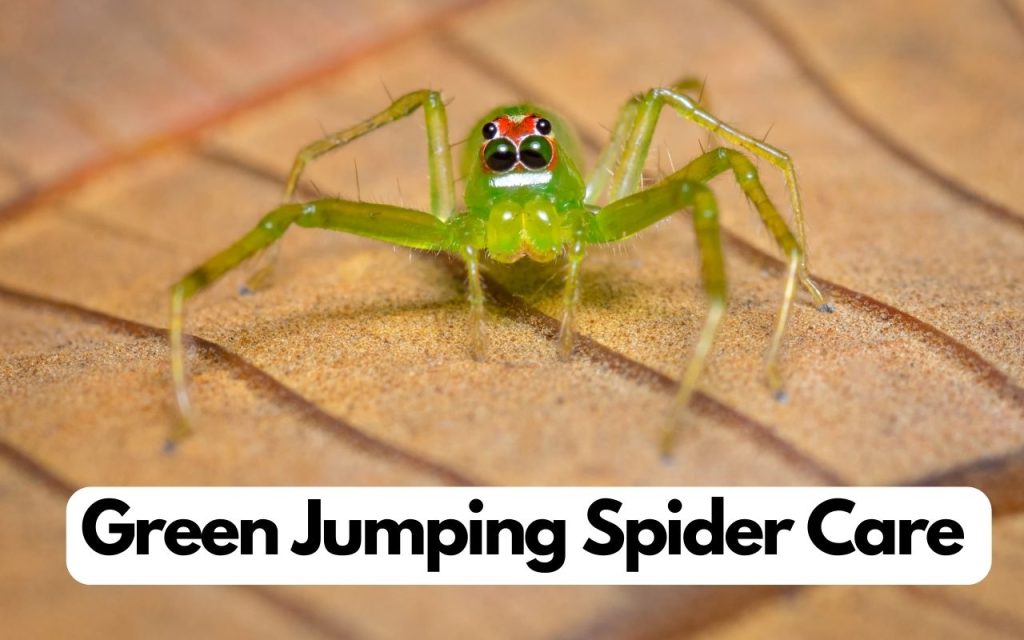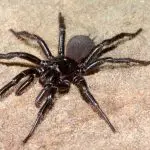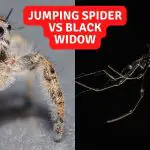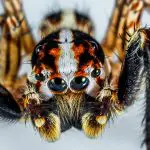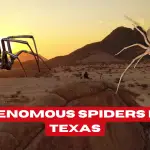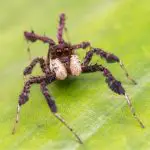Last updated on June 23rd, 2023 at 08:28 am
The Green Jumping Spider (Lyssomanes viridis), also known as the Magnolia Green Jumping Spider, is an extremely beautiful species which has some noticeable differences when compared to other members of the Salticidae family. At only 5-8mm in length, it is a small spider. It also has longer, more slender-legs in proportion to its cephalothorax and abdomen.
Overall, you could say that it has less of a typical Jumping Spider body shape than other kinds. As far as we know, this is because it is part of a more ancient, primitive genus, and may be a living example of what the first jumping spiders looked like.
So, out of both scientific interest and the desire to have a cool pet – let’s take a look at how to care for the Green Jumping Spider!
Unveiling the Green Jumping Spider
The Green Jumping Spider, scientifically known as Lyssomanes viridis, is a captivating species native to the southeastern United States. With its vibrant green color, distinct eye pattern, and characteristic agile movements, this species offers a fascinating entry into the world of arachnids.
Often, this species is encountered by luck, mainly because its camouflage is so good. They blend in perfectly to leafy backgrounds, and seem to have a preference for broad, flat leaves.
Unlike the Bold and Regal Jumpers, the Green Jumper is a small species, which adds to the difficulty in finding them. On average, adult females reach 7 or 8mm in length, and males about 5-6mm.
Constructing the Ideal Habitat
Creating a suitable environment is the first step in caring for a Green Jumping Spider. It’s essential to mimic their natural habitat to the best possible extent for their wellbeing.
A well-ventilated terrarium decorated with plant leaves, twigs, and other natural elements makes an ideal home for these spiders, allowing them to explore and express their natural behaviors freely.
Given their small size, I would only recommend a specialised Perspex enclosure, like the one below:

Climate Control: Temperature and Humidity
Green Jumping Spiders thrive in temperatures that hover around 24 to 28°C (75 to 82°F). Regarding humidity, a level of around 60-70% replicates the conditions found in their natural habitat of the eastern and southeastern US.
Regular monitoring with a digital thermometer and hygrometer helps maintain these conditions, contributing to the overall health and activity levels of your spider.
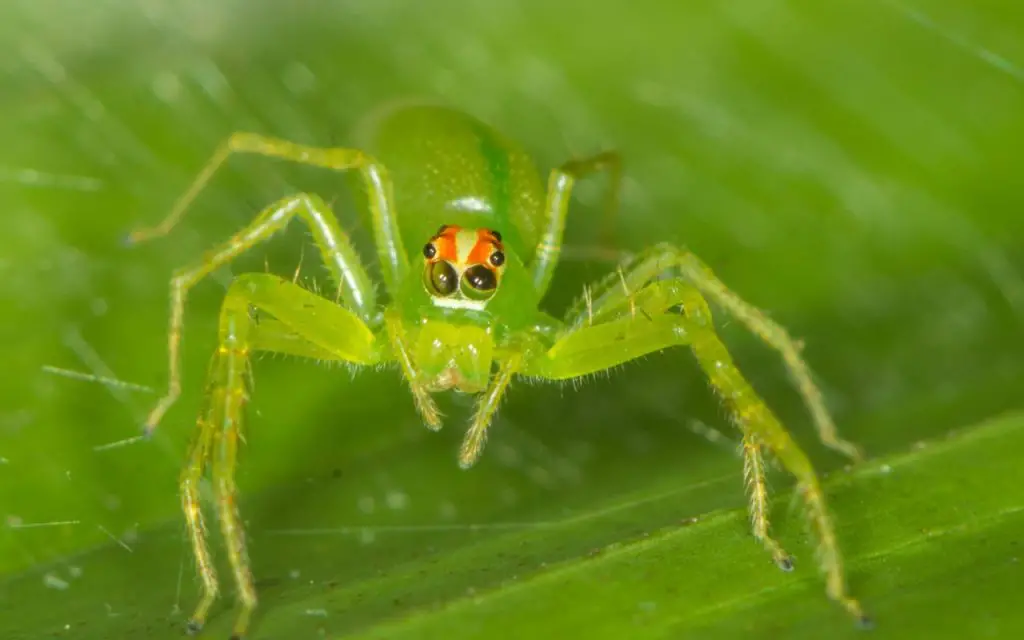
Dietary Preferences of the Green Jumping Spider
Feeding a Green Jumping Spider provides a window into their remarkable hunting strategies. These spiders have an appetite for a variety of small insects such as flies, aphids, and other small spiders.
Feeding your spider a diverse and nutritious diet not only ensures their health but also offers the opportunity to witness their unique hunting tactics.
In captivity, you need to take the small size of this species into consideration. Therefore, the only prey I recommend are:
- Fruit flies
- Flightless fruit flies
- Pinhead crickets
Or, anything you can find of similar size in your backyard.
Water: A Key Component
While spiders may not be the first creature that comes to mind when thinking about water needs, Green Jumping Spiders require hydration for optimal health.
A gentle misting of water inside the enclosure every day encourages natural drinking behaviors and helps maintain the necessary humidity levels.
Whilst I recommend misting larger species every other day, small ones like this will generally need a very light misting every day. This is because the smaller the spider, the more quickly it can dry and die from dehydration.
Gentle Handling: An Exercise in Patience
While Green Jumping Spiders are typically non-aggressive towards humans, their quick and agile nature can make handling them a bit challenging.
It is always best to allow the spider to come to you rather than attempting to pick it up, reducing stress for the spider and making the handling experience safer and more enjoyable for both of you.
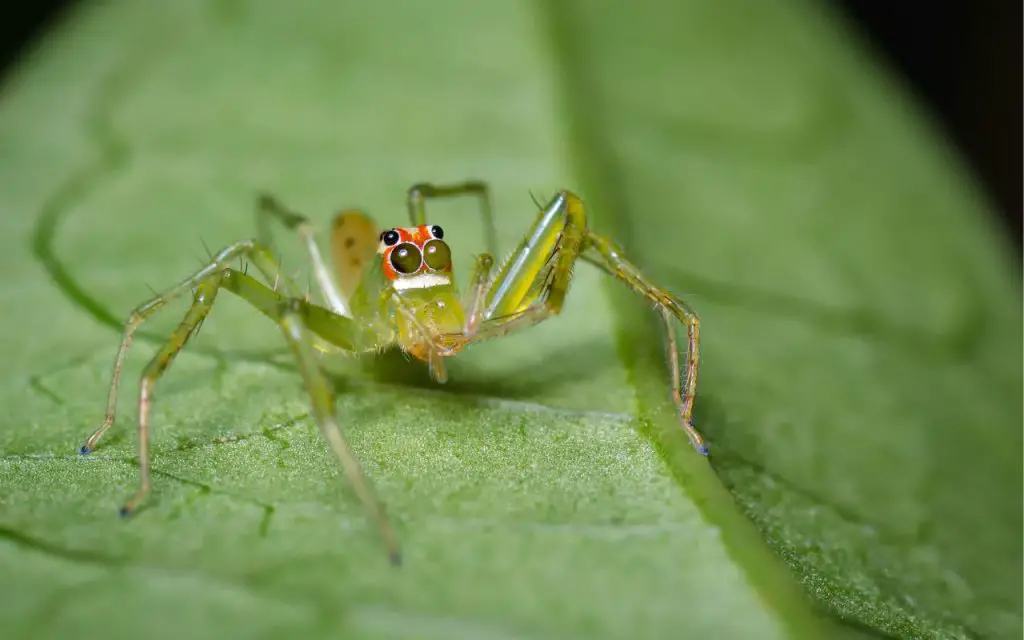
The Fascinating Behavior of the Green Jumping Spider
Green Jumping Spiders are active, agile, and fascinating to observe. Whether it’s their precise, acrobatic movements while hunting, or the meticulous care they take in grooming themselves, there’s always something new to learn and appreciate when observing these incredible creatures.
Like other jumpers, you can watch them stalk their prey slowly for minutes at a time – then quickly pounce on it.
Additionally, it’s also interesting to see how they pick their favorite spots on leaves, and flatten themselves to blend in with the help of their green camouflage.
Health Considerations and Prevention
Like any other pet, Green Jumping Spiders can be prone to certain health issues. Dehydration, fungal infections, and parasitic infestations are some potential concerns.
Regular cleaning of the enclosure, provision of a balanced diet, and adequate hydration can significantly help in maintaining the spider’s health.
Breeding Green Jumping Spiders: A Complex Endeavor
Breeding Green Jumping Spiders is a challenging yet rewarding experience for the seasoned arachnid enthusiast.
Females have been known to cannibalize males after mating, so careful monitoring and a separate enclosure for the female can help ensure successful breeding. Living together full-time really isn’t an option!
It really comes down to this: you put the male in, and if the female doesn’t eat him, they’ll mate. Then, a couple of weeks later she’ll lay an egg sac, which will hatch after another week or so.
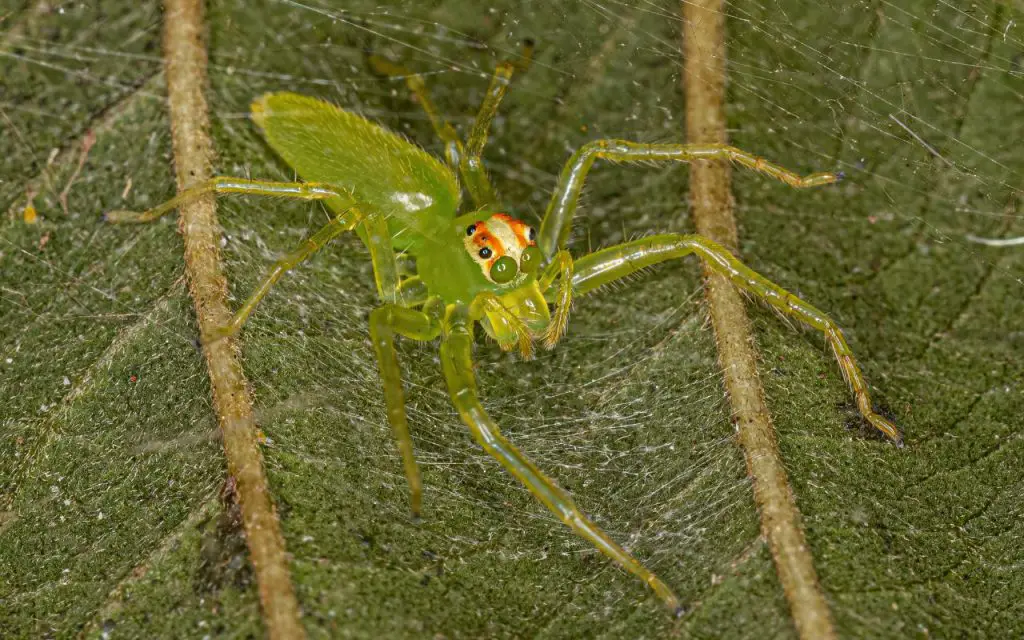
A Summary of Green Jumping Spider Care
To consolidate the extensive information we’ve covered, here’s a useful table:
| Aspect | Requirement |
|---|---|
| Housing | Well-ventilated perspex terrarium with plant leaves |
| Temperature | 24-28°C (75-82°F) |
| Humidity | 60-70% |
| Diet | Fruit flies, flightless fruit flies, pinhead crickets, or prey of similar size |
| Water | Misting every couple of days |
| Handling | Minimal and patient |
| Breeding | Careful supervision – cannibalism possible |
| Health Issues | Fungal infections, parasitoid wasp attacks |
Green Jumping Spider care: Final thoughts…
Why I like this species:
- Spiders in the Lyssomanes genus are more primitive than other jumping spiders. They give us a living example of the early stages of this group’s evolution
- The striking green coloration is unusual amongst spiders, and makes their appearance unique
Things to consider before getting one:
- This is a small species – it is extremely easy for them to escape most enclosures!
Caring for a Green Jumping Spider offers a unique opportunity to delve into the captivating world of arachnids, enriching our understanding of nature and its intricacies. Their distinct value lies in the fact that they are so unlike other Salticidae species. Whilst they may not be particularly large, I would consider getting one purely for the scientific value, especially if you are considering studying arachnids seriously.

